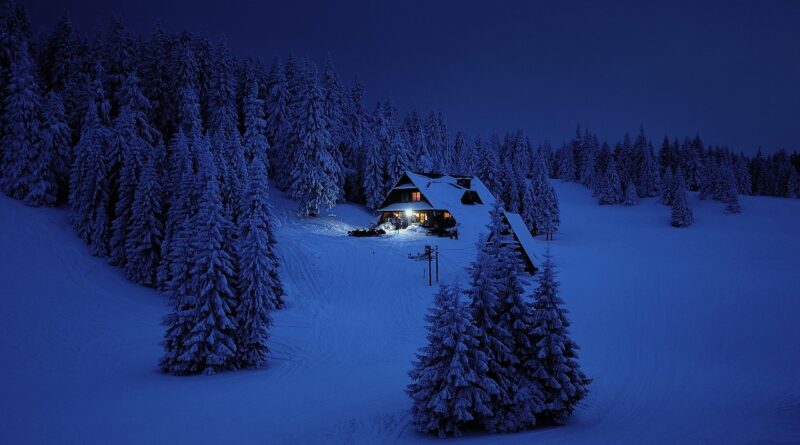How to Winterize your Home Checklist
Whether you rent or own your own home it is important to get your home ready for winter to prevent frozen pipes, frozen sprinklers and to help save money on your energy bills. Just like you, many home owners don’t know how to winterize their home or even where to start. That’s why, as home owners here at the Honey Do list Group, we decided to help you winterize your home by creating a checklist for home owners and renters. So lets get started and get your home winterized.
Winterizing your Home Checklist Overview
- Protect your Pipes and Remove Hoses from spickets
- Insulate your Doors and Windows
- Add weather stripping to doors
- Add weather stripping to windows
- Clean Your Gutters
- Inspect Your Roof Seal attic
- Get a Smart Thermostat
The above overview does not cover every little thing you can do to winterize your home but these are the ones that we feel are the most important steps when winterizing your home. So, let’s go into a little more detail to help you with your home winterization project.
Protect your Pipes and remove hoses from spickets
Well, this seems fairly obvious but it is the most important step in winterizing your home. A burst pipe in your basement or in your sprinkler system can be expensive to repair and can damage irreplaceable items in your home. There are simple rules you may already know like keep your thermostat set to 55 degrees or more even when your away.
So, first things first remove all hoses from the spickets in your yard. If a hose is left on during a below freezing night the water left in the hose can freeze and push water into the pipes potentially causing them to burst and flooding your basement or yard. I do this every year and have never experienced a burst pipe.
After you have removed all your hoses you will want to turn off your sprinklers main water line (if not already done) Once removed you should open all of your valves and blow out the water in your sprinkle pipes to ensure they are emptied of any water. This will help prevent frozen sprinkler pipes and will prevent the need for costly spring repairs.
Finally, check the insulation around the points where the pipes enter your home and fill any gaps or cracks with caulk or insulation to protect your pipes. You can always consider using pipe sleeves as well just make sure to keep them together as tight as possible and seal the any cracks with duct tape or caulk.
Insulate your Doors and Windows
Now that your pipes are insulated you will want to insulate your doors and windows to help keep the warm air in and the cold air out. This process will help to reduce your energy bills in both winter and summer. To do this we recommend sealing your windows with caulk or insulation where needed and to add weather stripping.
Where should you add weather stripping when winterizing your home? You should replace worn out weather stripping on all your exterior windows and doors. This will help create a tight seal between the door/window and the housing to prevent heat loss. Inspect your weather stripping regularly but especially before winter hits and the cooler temperatures start happening.
Honey Do List Tip: Adding weather stripping before it gets cold will make the process much more pleasant as you will not have to be doing it in the snow or freezing temperatures. We recommend adding your weather stripping in the early fall.
Clean your Gutters
You’re probably thinking why do I need to clean my gutters to winterize my home? To help show you the importance of cleaning your gutters before winter comes, I would like to share with you a personal story about a town home we rented while in college. During a cold winter, we noticed a leak right in our living room start to appear and began dripping. We had to move all of our stuff out of the way so we could place a bucket under the drip. As we waited for the repair men to arrive the drip got worse and quickly began filling the bucket. The leak was so bad they had to remove the dry wall and melt all of the ice that had accumulated on the roof. The repair men then explained that the overflowing gutters caused the water to be trapped on the roof and as it froze got pushed up under the shingles and as the temperatures got warmer melted and leaked into the home.
So, to prevent leaks in your attic or roof you should clean your gutters out to allow for water to train properly as the snow melts. Obstructed gutters in spring and rainy season can also cause leaks to occur. It is especially important if you live in a dusty area or have tall trees surrounding your home. Clean your gutters often and especially in the fall once all the leaf’s have fallen.
Inspect your Roof and Seal your attic
In the early fall it is important to check your roof for broken seals, missing shingles and potential spots where a leak can occur. Look around the furnace and other pipes sticking out of your roof. You should also inspect around your fireplace and seal and holes or crack. After looking at the exterior of your roof it is also important to inspect your attic. The majority of heat loss occurs through unwanted openings in the attic. So this will also help reduce your energy bills.
Honey Do list Tip: Inspect your attic in the day when the sun is out. Light may come through the cracks and openings helping you to find any holes or gaps. After locating the holes or gaps fill them with insulation and caulk. While in the attic add any insulation where there is any missing or neglected.
Get a Smart Thermostat
A smart Thermostat will help you to automate your heating and cooling needs helping you to save time and keep your house protected. Many come with additional sensors that can be placed throughout your home. We recommend purchasing a smart thermostat and utilizing its energy efficiency features and placing these extra sensors throughout your home to maintain a desired temperature and keep your entire homes temperature greater than 50 degrees. They are easy to set up and are controllable from your phone. We set one up this year and it has already proven to save us money and time while maintaining a comfortable temperature throughout our home. Learn more about home automation
In Conclusion we hope that this helped to get your home winterized and prevent any unnecessary problems this spring. Home Maintenance can be time consuming but doesn’t have to be. We are developing a course to help you save time while maintaining and organizing your home. Contact us for more information.

